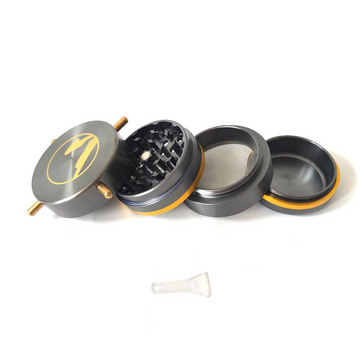Cannabis culture in the United States is experiencing a vibrant renaissance. No longer confined to back alleys or college dorm rooms, it has grown into a sophisticated lifestyle movement — influencing everything from social justice and design to health and community identity.
In this article, we explore nine key dimensions that define cannabis culture in modern America.
1. From Counterculture to Mainstream: The New Normal
Cannabis has undergone a dramatic transformation. Once a symbol of rebellion, it now exists in a legal, design-conscious, and socially celebrated space. As of 2025, over 40 U.S. states have legalized medical cannabis, while 24 states (plus Washington, D.C.) permit recreational use.
Cannabis conversations are no longer taboo. You’ll find them in wellness blogs, business summits, and even dinner parties. The once-hidden herb has become a mainstream lifestyle choice, powered by themes of design, diversity, and identity.
2. Experience Over Intoxication: Ritualized Consumption
The way people consume cannabis is changing. Forget about crumpled joints behind closed doors — today's experiences revolve around cannabis lounges, infused dinners, and “budtender” tastings.
At places like The Original Cannabis Cafe in West Hollywood, patrons enjoy hand-picked strains paired with gourmet food. Budtenders act like sommeliers, matching cannabis with mood, flavor, or dining experience.
This signals a deeper shift: cannabis is about presence, wellness, and intentional living, not just getting high.
3. Cultural Symbols and Shared Identity
Cannabis culture thrives on rituals and events. The most iconic is 4/20, celebrated every April 20th, where millions gather across the country to advocate, share, and celebrate cannabis.
Another emerging event is 7/10 or “OIL DAY,” dedicated to cannabis concentrates. (Hint: 710 flipped upside-down spells “OIL.”) These moments serve as cultural anchors, binding users, artists, and entrepreneurs into a shared space of community and progress.
4. Gender, Identity, and Redefining the Space
Cannabis marketing used to center on masculine tropes. But today, women and queer entrepreneurs are reshaping the industry.
Brands like Miss Grass and Her Highness, along with collectives like Women Grow, challenge outdated stereotypes. They create inclusive spaces that empower diverse users and reframe cannabis as a tool for healing, expression, and liberation.
This cultural shift is more than cosmetic — it’s political and transformative.
5. The Aesthetic Evolution: Cannabis Goes High-End
Today’s dispensaries resemble luxury skincare stores more than traditional headshops. With bright interiors, modern fonts, and educational signage, these spaces are designed to attract a style-conscious, wellness-oriented audience.
Top-tier brands like Lowell Farms, Serra, and Edie Parker combine high-quality cannabis with beautiful packaging and storytelling. Publications like High on Design document this aesthetic evolution, showcasing how pipes, trays, and accessories have become part of curated home decor.
Cannabis is now fashion-forward — inside and out.
6. Puffcon and the Rise of Grassroots Events
One shining example of modern cannabis culture is Puffcon, hosted by Puffco. Unlike typical trade shows, Puffcon is invite-only — and only for users who own Puffco’s signature devices like the Peak or Peak Pro.
This unique requirement creates a tight-knit, brand-driven community. Attendees enjoy live music, demos, immersive art, and deep connections with fellow enthusiasts. Puffcon reflects how cannabis festivals are evolving — from wild gatherings to curated cultural summits.
7. Justice, Equity, and Cannabis Reform
The legal cannabis boom also raises questions of fairness. For decades, Black and Latino communities were disproportionately affected by cannabis-related arrests.
Today, states like New York and Illinois lead in equity-centered legalization, offering business licenses, expungement programs, and reparative grants. Organizations such as The Last Prisoner Project advocate for the release and reintegration of those unjustly incarcerated.
Legalization isn’t complete until it’s also just.
8. Federal Policy and Industry Challenges
Despite state-level progress, cannabis remains a Schedule I drug at the federal level — the same as heroin. This classification limits banking, research, and interstate commerce, while creating tax nightmares for legal businesses.
However, in 2024, the DEA began evaluating reclassification to Schedule III — a potential breakthrough. Meanwhile, some states like Colorado have seen market saturation, with revenues falling from $2.2 billion in 2021 to $1.5 billion in 2023.
This signals an industry correction, not collapse — and it’s pushing brands to innovate smarter.
9. The Road Ahead: Trends Shaping the Future
The future of cannabis culture in America will be shaped by:
-
Federal Legalization: Unlocking banks, investments, and research.
-
Health-First Products: Low-THC, CBD-rich, and microdose formats.
-
Cross-Industry Collaborations: Cannabis + food, wellness, and tech.
-
Content Shifts: With stricter rules on TikTok/Instagram, users build private communities on Discord, Patreon, and in-person events.
-
Standardization & Science: As research deepens, expect consumer demand for accurate terpene profiles, dosing transparency, and clinical-grade quality.
Final Thoughts
Cannabis culture is no longer an underground whisper — it's a proud shout woven into design studios, cafés, protest marches, and bedside wellness kits.
It’s no longer just about what’s in the jar — it’s about who uses it, why they use it, and how they share the experience.
The plant is powerful, but the culture? Even more so.
- 420 Community,
- 7pipe Community,
- Cannabis Accessories,
- Cannabis Aesthetics,
- Cannabis and Identity,
- Cannabis Culture,
- Cannabis Design,
- Cannabis Events,
- Cannabis Innovation,
- Cannabis Legalization,
- Cannabis Lifestyle,
- Cannabis Trends,
- Cannabis Wellness,
- Glass Blunt,
- Modern Smoking Devices,
- Paperless Smoking,
- puffco,
- Puffcon,
- Social Equity Cannabis,
- Sustainable Smoking,
- Women in Cannabis

